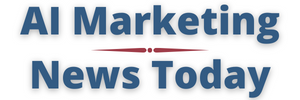The rise and fall of prompt engineering as a job category tells us something about the rapid pace of tech transformation, according to one consultant. What seemed like the future of work just 18 months ago has already become obsolete, and forward-thinking companies are pivoting to fresh AI-readiness priorities.
According to David Borowski, senior partner and Washington, D.C., office lead at consulting firm West Monroe, HR is shifting its focus from upskilling employees to write AI prompts to shaping broader workforce strategies. He notes that just a couple of years ago, prompt engineering, the practice of crafting precise inputs to guide AI outputs, was touted as a âposter childâ skill for the future. âNow it’s nowhere,â Borowski says, observing how quickly upskilling priorities have shifted from technical prompt crafting to far more sophisticated capabilities.
The reason? AI systems have evolved beyond the need for carefully crafted prompts. What companies now need isn’t prompt engineers, says Borowski, it’s strategic transformation.
HR leaders have entered what Borowski calls the “post-prompt age,” where AI systems that better understand natural language and context have replaced the need for the technical skill of writing effective prompts. This represents a change in how organizations should think about AI implementation.
David Borowski, West Monroe
“It’s everyone’s problem now,” Borowski emphasizes, referring to AI implementation. He says the days of siloing AI skills in IT departments are over. Companies now need to build organization-wide adaptability instead of training specialists in prompt engineering. As Borowski notes, “What constitutes success: moving forward,” and that requires cultural change, not just technical expertise.
Borowski advises HR leaders to rethink talent strategy by focusing on a fundamental question: âWhat type of talent is best suited to do the work?â This outlook moves beyond retraining employees to use AI tools. Rather than concentrating on skill development, Borowski encourages companies to reconsider the very design and composition of their workforce. He says leaders can focus on roles, responsibilities and organizational structures that support essential capabilities. Aligning these elements helps position the business to thrive in a world increasingly shaped by AI.
Instead of bolt-on AI training, Borowski says, HR leaders should be asking employees: “How have you applied it, what have you learned?” This dials into meaningful business outputs rather than teasing out technical proficiency metrics.
Breaking down silos
Yet true transformation goes beyond simply rolling out new technology. Borowski says leaders may need to restructure how HR and IT work together on workforce strategy and that forward-looking organizations should consider a “tighter integration between IT and HR.” The reason? “Because AI behaves like people,” he says, departments that influence the workforce need to stay “connected at the hip.”
Borowski stresses that HR leaders should focus on âbuilding experienced human beings who can be augmented,â not replacing workers with technology. He cautions against the temptation to eliminate entry-level or junior roles in the pursuit of efficiency. Cutting the âlayerâ of young professionals, he warns, can undermine long-term growth and jeopardize the organizationâs future leadership pipeline.
HR leaders should focus on cultivating skills that amplify human judgment and critical thinking, says Borowski, equipping employees to work effectively alongside AI in the long run. He suggests the emphasis should be on enhancing decision-making through augmentation, rather than attempting to replace human expertise entirely.
The new competitive reality
So, how do companies find candidates who will fill the organizational roles needed for the future? Borowski says organizations should “cast a wider net” when thinking about AI applications. He suggests focusing on how AI can drive results in other domains. This approach is more effective than limiting it to narrow, function-specific implementations. This broader approach recognizes that AI’s impact crosses traditional departmental boundaries.
Thereâs also development needed in the hiring department. “Recruiters must be retrained” because they are “highly impacted” by these changes, Borowski notes. They need to identify candidates who can demonstrate adaptability and results, not just technical AI skills. Companies should adopt what Borowski calls “ride-along” learning, emphasizing observation and hands-on application. This approach complements rather than replaces formal training programs.
Most importantly, organizations must “not abdicate critical thinking” while building AI capabilities, says Borowski. The companies that succeed will be those that can most effectively transform their organizations to leverage AI strategically, not those with the best technical AI skills.
As Borowski emphasizes, the challenge is “how fast tech is accelerating and changing.” How can HR leaders build an organization that can keep pace? The answer isn’t in the prompt, he says. Itâs in the people, processes and organizational adaptability that enable sustainable AI transformation.


